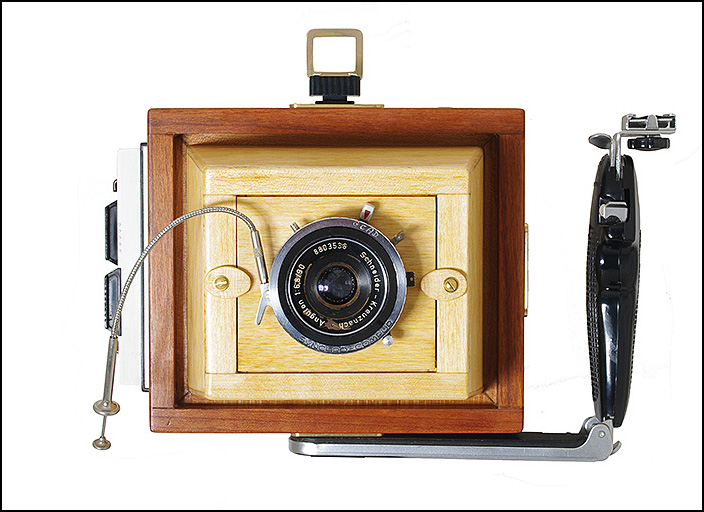The Surveyor III
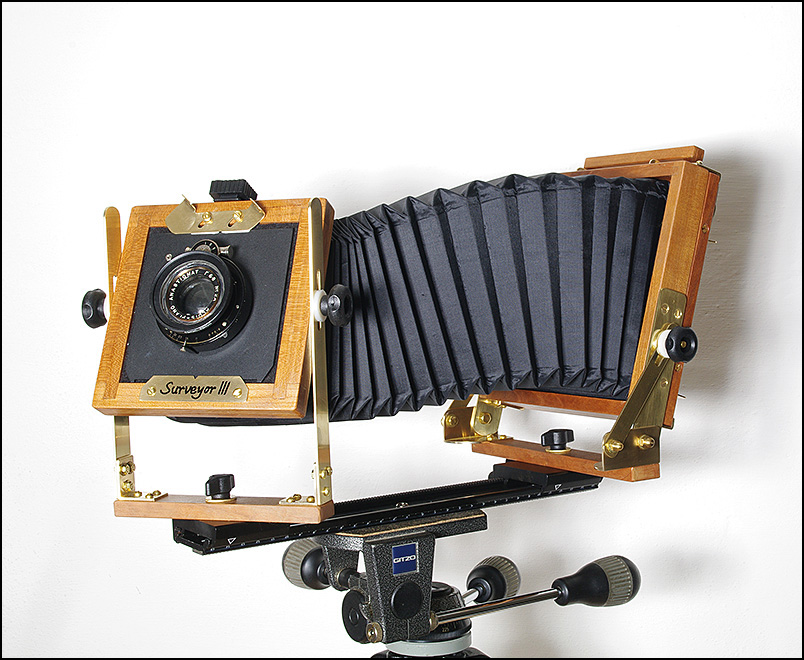
This version is similar to the earlier Surveyor cameras in the essentials but it is mounted as a monorail camera, with a 300mm rail which can be extended to 500mm. It is portrait-landscape convertible. It takes regular 4x5 Double Dark Slide (DDS) sheet film holders, a 4x5 Grafmatic x6 sheet film magazine, a 120 roll film holder on a 4x5 adapter plate, some Polaroid holders, or even a digital back with the appropriate 4x5 adaptor.
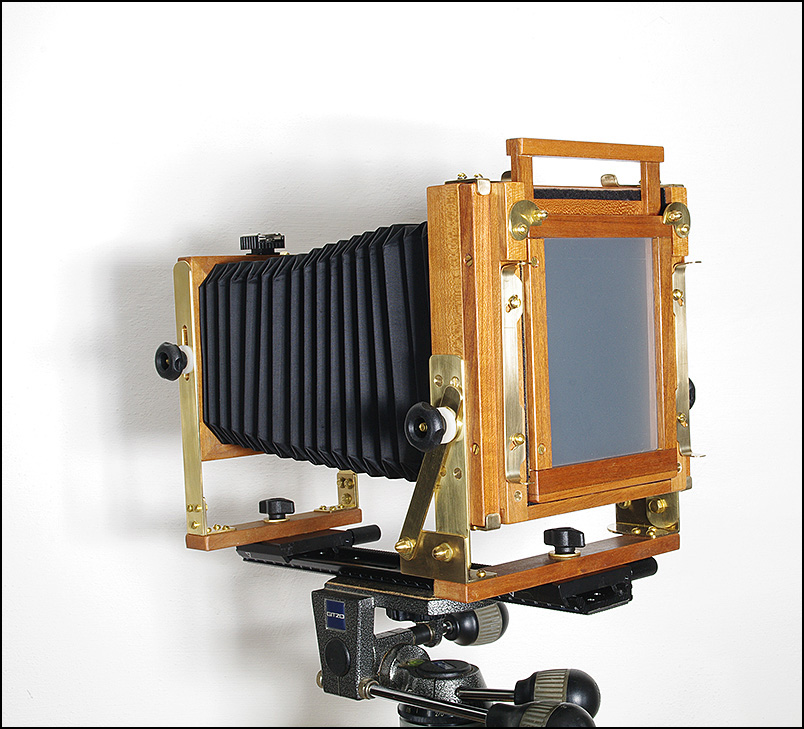
The Surveyor II
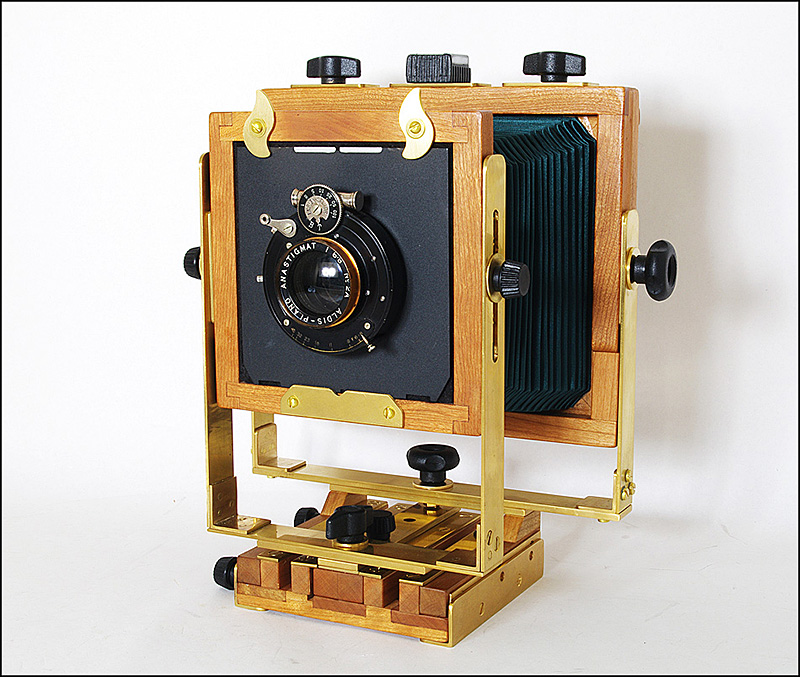
The Surveyor II is again made from cherry wood and brass, but as a non-folding model. It is lighter and with its small footprint it is easier to pack.
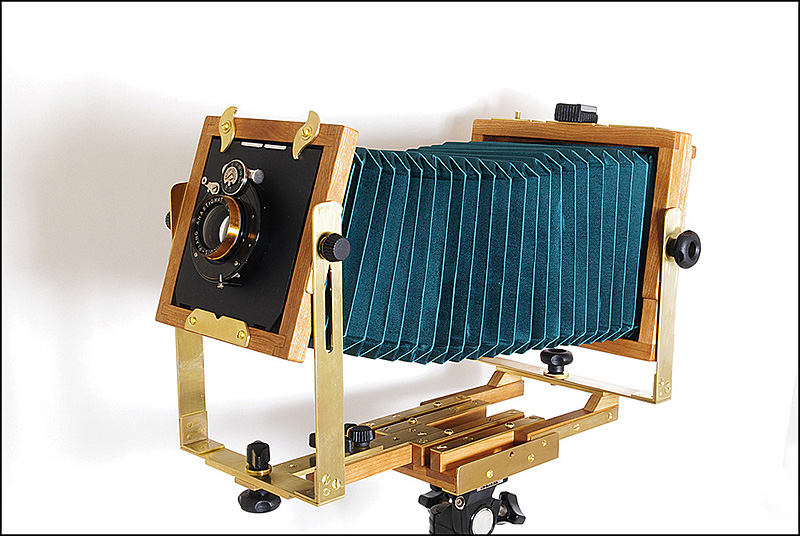
The Surveyor
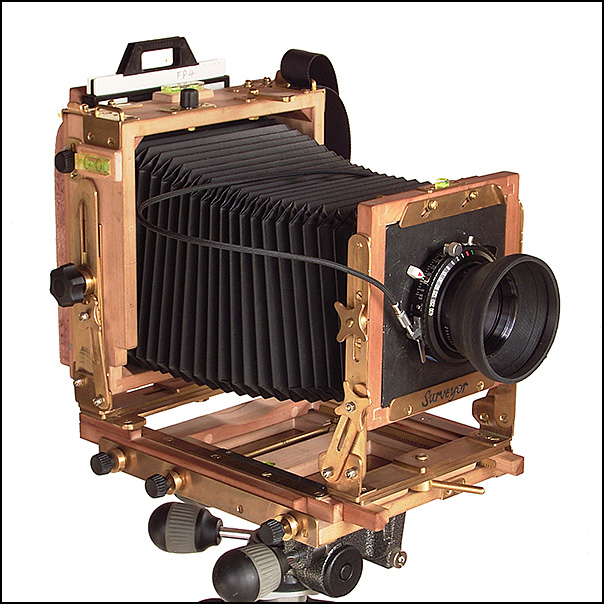
I made the Surveyor in 2004/5 and used it for several years before selling it on. I've since made another, (so this can now be renamed Surveyor I) but below are some shots of the details from when it was made.
I first looked into large format photography around the time I was getting into medium format. I'd just bought a 6x6cm camera and the idea of having a 4"x5" made a lot of sense. Scans from larger negatives can produce larger, sharper images. However, I soon discovered that the fine resolution of scans was not the only or even the main advantage. The movements of the front and rear standards on a large format camera provide the photographer with a powerful creative tool - compensating movements for architecture, and selective focus movements to increase (or decrease) the apparent depth of field.
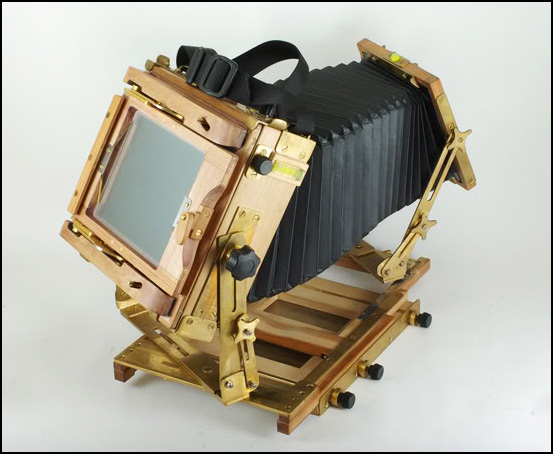
Brand new large format cameras are expensive. Their high price is related to the fact that the market for them is quite small, and to the design and the materials used to make them. Folding field cameras are generally made of hardwoods and built to last, and that usually involves handcrafting.
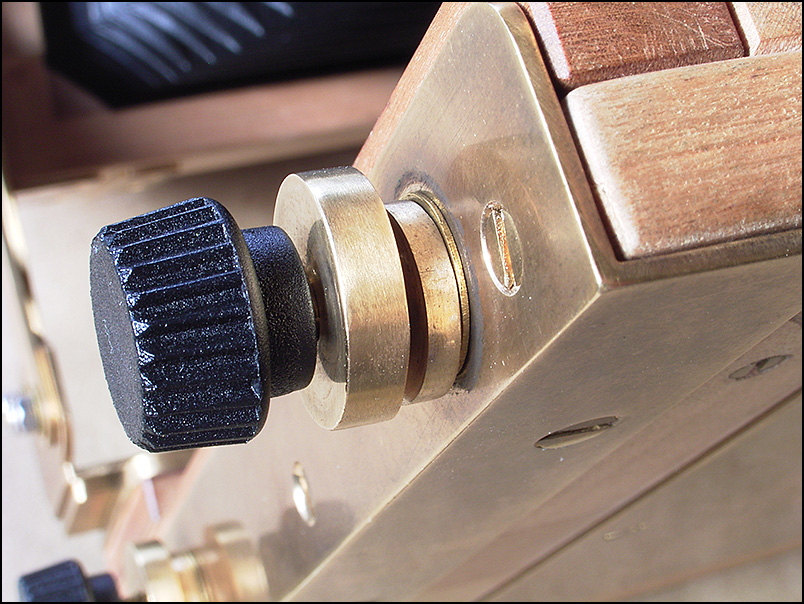
Having some experience with basic wood and metalwork, I decided to build rather than buy. The materials would cost relatively little and the time would be my own. First though, I needed to design it, which involved deciding on the structure and mechanics and on the quantity and quality of materials. Not having one available to copy part for part, I designed the Surveyor by referring to photos of other cameras, and by working from the dimensions of the lensboards and film backs available on the market. I bought lengths of cherrywood from a timber supplier, industrial brass stock, and a variety of nuts, bolts and screws. I found an old wooden film back on eBay, and ordered bellows, spirit levels, and knobs from specialist manufacturers.
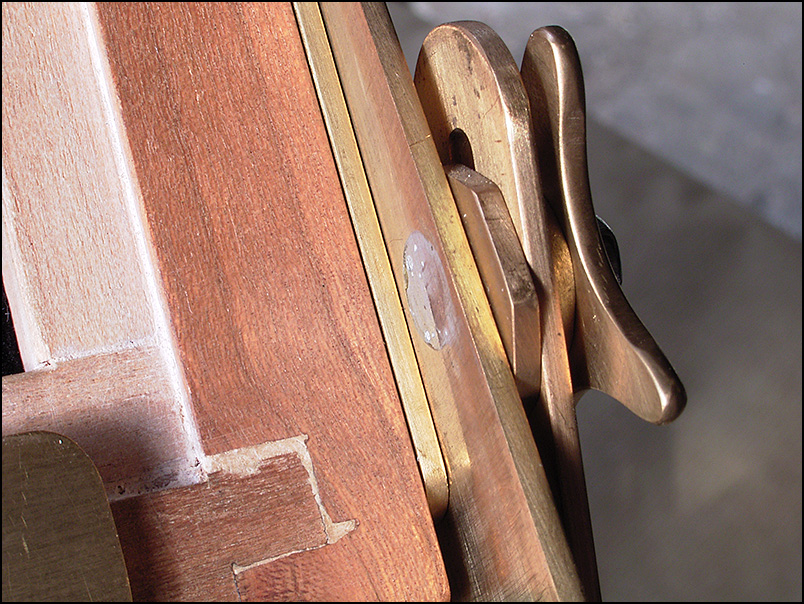
With the typical 35mm or 120 film camera, the lens is fixed in parallel to the film plane such that the axis of the lens is perpendicular to the film at all times. The zone of sharp focus moves forwards and backwards along the axis when the user turns the focus ring on the lens. This is still true when you move the front standard of the 4x5 camera forwards or backwards - once your subject is in sharp focus, everything immediately above and below the subject is also sharp, but whatever lies in front or behind may be blurred.
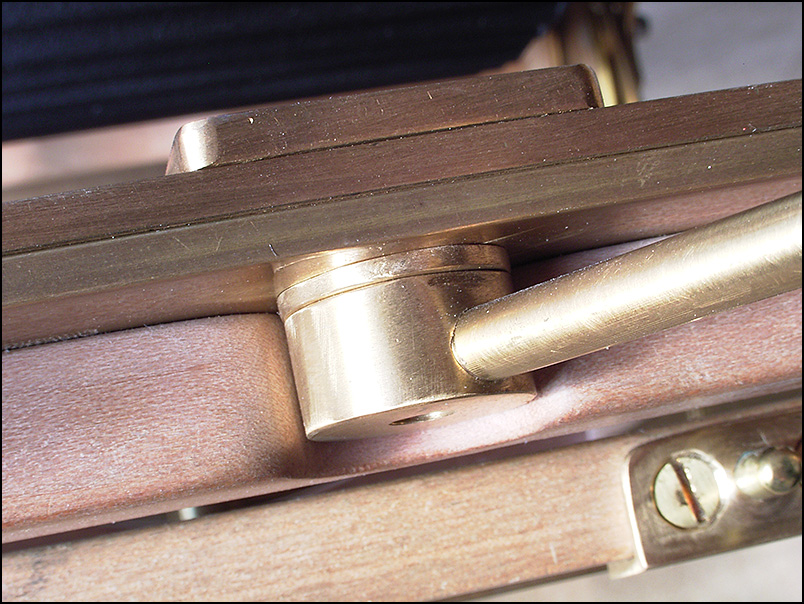
The tilt function on the front standard offers the photographer an alternative focus technique. If you focus on your subject and then tilt the standard forwards, what lies above and behind, and below and in front of your subject is also in focus. In other words, since the plane of focus remains parallel to the front standard, it is tilted at an angle to the film plane. You can still increase or decrease depth of field using the lens aperture, but relative to the diagonal plane.
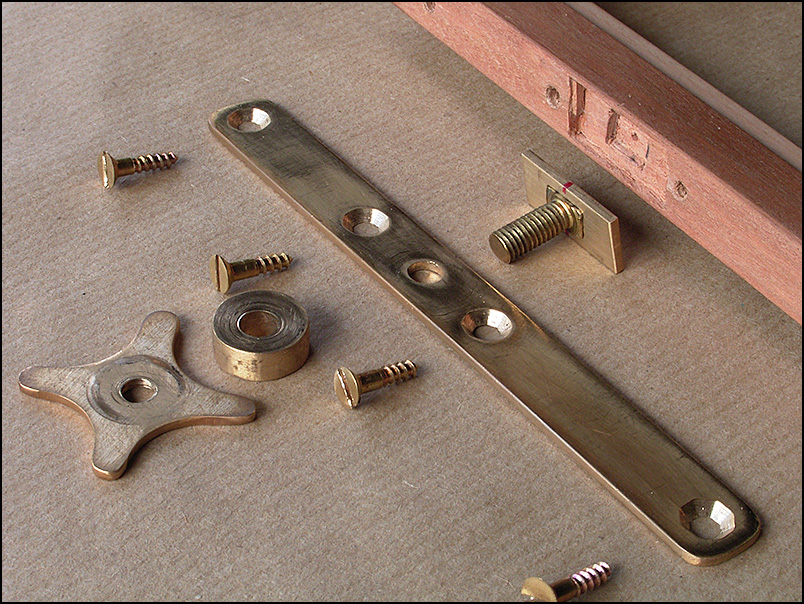
Forward tilt on the front standard has long been used in product photography, for example, to increase the effective depth of field for tabletop shots without resorting to the smallest lens aperture. On the other hand, in portrait photography decreasing the depth of field is usually more desirable. Tilt and swing allow much finer control of focusing than merely changing the aperture - the effect is almost akin to rearranging the laws of physics.
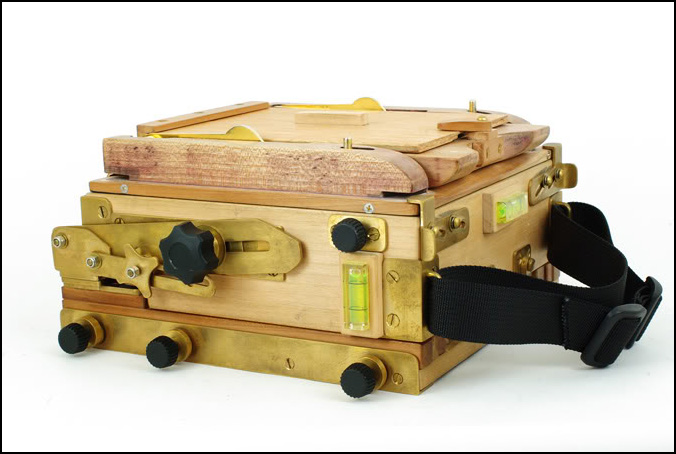
The Neretta
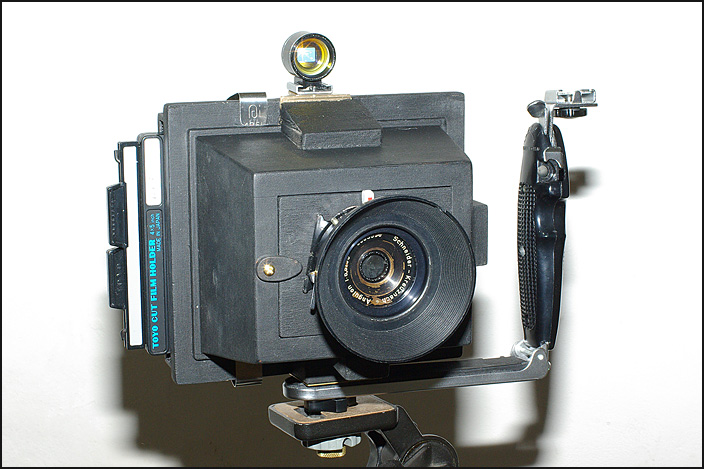
The Neretta, (cute little black thing) is a fixed focal length 4"x5" sheet film camera with a 90mm Schneider Angulon lens. With its viewfinder and angle grip the appearance owes something to the 1940's press camera, but it operates like a modern Point & Shoot.
The point of sharp focus of this lens is set at 4 metres by the position of the lensboard. The zone of focus is dictated by the aperture. At f.22, everything between approximately 2 metres and infinity is in focus. If used handheld it operates best with a fast film so that the shutter speed can be at least /125.
The original Neretta was designed in 2003 to use with a pinhole, but I chose the 90mm focal length so that it could also take a wide angle large format lens. It has been superceded by the Tutone, so named because of the contrasting colours of the American Cherry and Maple wood used for the construction.
